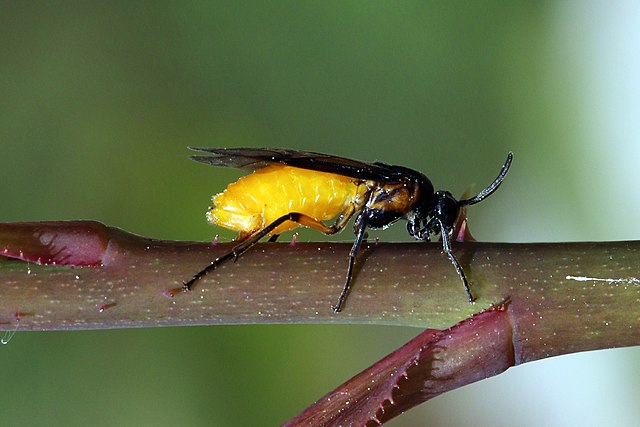Parasitoid wasps are a large group of hymenopteran superfamilies, with all but the wood wasps (Orussoidea) being in the wasp-waisted Apocrita. As parasitoids, they lay their eggs on or in the bodies of other arthropods, sooner or later causing the death of these hosts. Different species specialise in hosts from different insect orders, most often Lepidoptera, though some select beetles, flies, or bugs; the spider wasps (Pompilidae) exclusively attack spiders.
Megarhyssa macrurus (Ichneumonidae), a parasitoid, ovipositing into its host through the wood of a tree. The body of a female is c. 2 inches (50 mm) long, with an ovipositor c. 4 inches (100 mm) long.
Spider wasp (Pompilidae), an idiobiont, carrying a jumping spider she has just paralysed back to her nest, where she will lay an egg on it.
...but endoparasitic koinobiont wasp larvae eventually fill its body and kill it.
Hornworm with parasitic wasp cocoons
Hymenoptera is a large order of insects, comprising the sawflies, wasps, bees, and ants. Over 150,000 living species of Hymenoptera have been described, in addition to over 2,000 extinct ones. Many of the species are parasitic.
Females typically have a special ovipositor for inserting eggs into hosts or places that are otherwise inaccessible. This ovipositor is often modified into a stinger. The young develop through holometabolism — that is, they have a wormlike larval stage and an inactive pupal stage before they reach adulthood.
Hymenoptera
Bombus muscorum drinking nectar with its long proboscis
Symphyta, without a waist: the sawfly Arge pagana
Apocrita, with narrow waist: the wasp Vespula germanica








